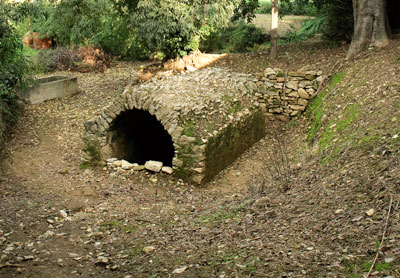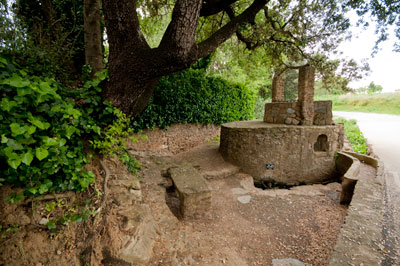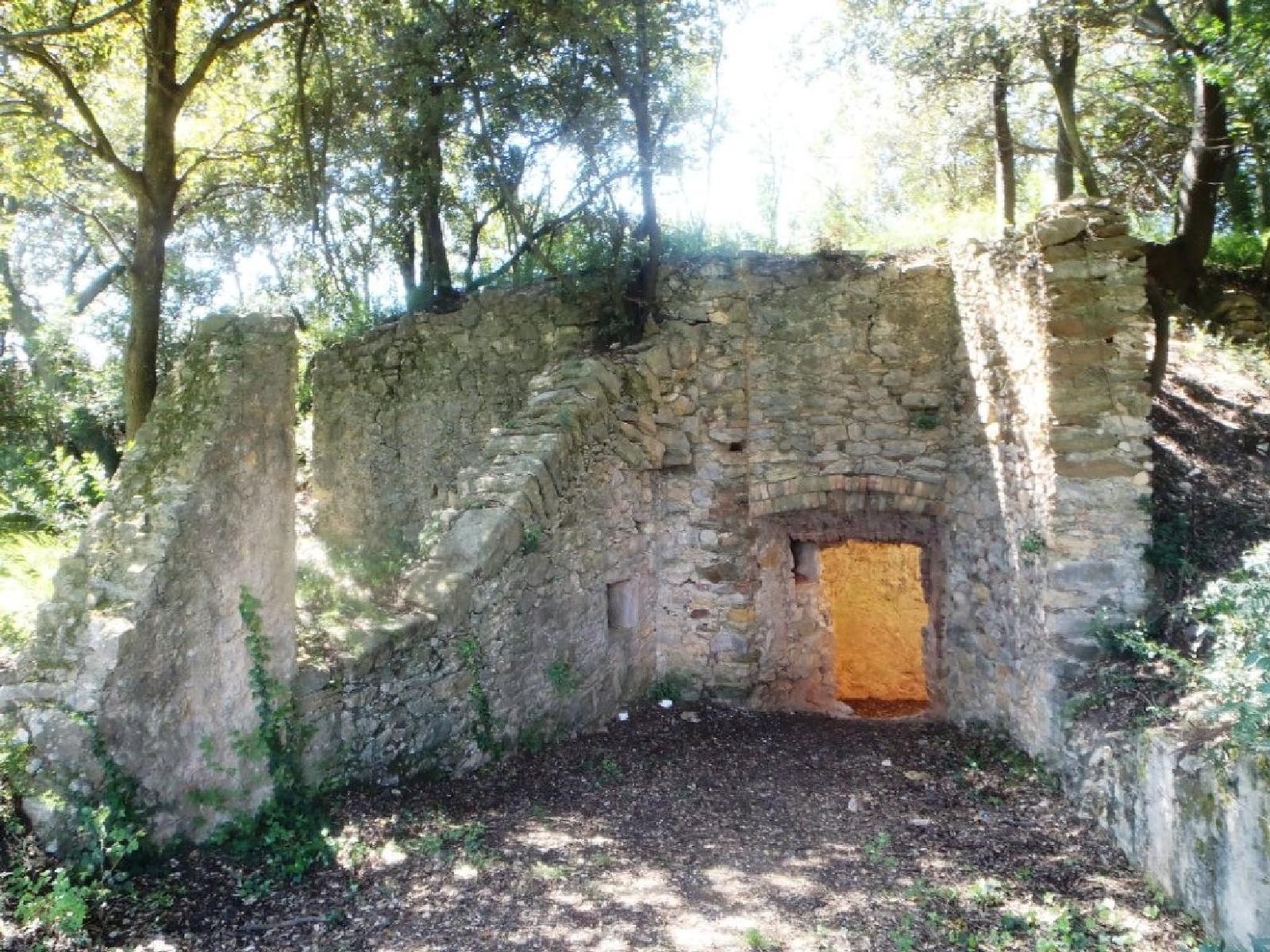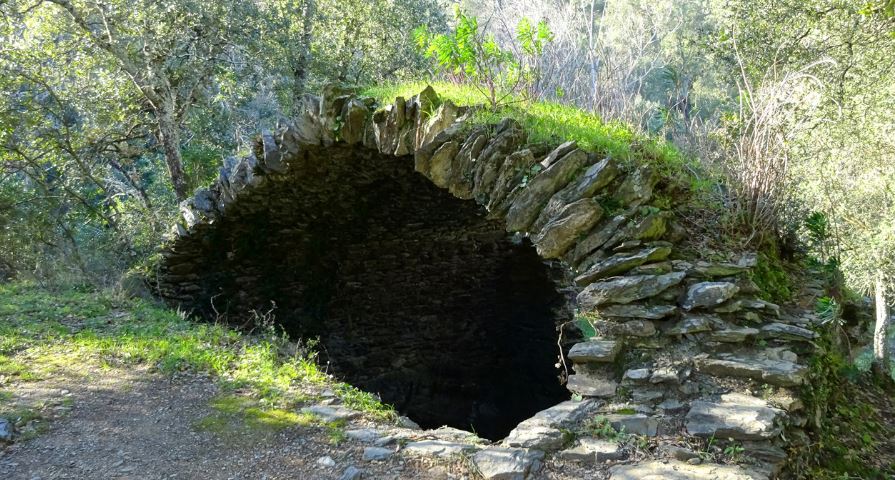Springs, ice wells and lime kilns
The ethnological heritage of Forallac is made up of farms, springs, paths, lime kilns and ice wells. All of them are testimonies of the traditional activities of the exploitation of forests.
The springs have always been linked to the work and life of its inhabitants, they are from those magical places that have collected many events over time. There are many springs that exist in the Forallac area, particularly in the area of ??the municipality included in the area of ??the Gavarres massif. Some of them are very famous for the quality of the water. The geomorphological characteristics of the massif are the origin of the large number of existing springs. This fact is a legacy of great natural value and is an interesting attraction. The Gavarres are an area with granite and filonian rocks of almost zero porosity, where the few existing water reserves are associated with fractures, diasclasis or areas of alteration. This is a medium in which the water circulation is very slow, due to its low permeability, and where the water uses discontinuities of the terrain to circulate: faults, diasclasis, contact between different materials ... In fact, it is often observed how it is in these discontinuities where most of the sources are located.

Fonteta Spring
Fonteta Spring is one of the most interesting springs of Forallac. It is considered by the inhabitants as the first spring, although over time it was forgotten because another was built in the church square. This spring contains water throughout the year and has a sandstone structure in the form of a vault with steps that give access to the water. There are public sinks nearby.

Santa Susanna Spring
The spring of Santa Susanna de Peralta, as it is now, was built in 1704, although historical documentation is available where it is mentioned long before that date. It is located under the protection of an impressive oak forest, just beside Peralta stream and the camí de Santa Susanna. It is a very welcoming place and it invites you to stay for a while at any time of the year, like the families who used to come to stay over for picnics. The water sprouted through a stone parapet that is almost buried. It was formerly used by the peasantry of the area.
Another of the most surprising resources for water use in the past is that of ice making. This industry is already documented in the Gavarres massif since the middle of the 16th century and reaches its maximum splendour between the middle of the 17th century and the end of the 18th century. In the Gavarres, the remains of eleven ice wells have been located.
They are large structures, built on the north side with stone and covered with a stone vault. The activity of storing ice in an isolated area comes from the need to have ice throughout the year. Ice was a product of first necessity until the expansion of modern refrigeration systems, both for the preservation of food and its healing properties.
The most significant one in Forallac is probably that of Mas Cals de Fitor. It is a large underground tank that was used for more than 200 years to keep the ice from the winter freezing of the water from the stream of Mas Petit. At that time, due to a short ice age, it was much colder than now, which allowed the development of this ice industry. Probably, the business had a fairly positive return because the well was located at the foot of the Camí Ral which until the middle of the 19th century connected the port of Palamós and Girona. The well has a trapezoidal floor and was probably built in the 13th century.
In the districts of Fonteta and Sant Climent de Peralta there were also more than twenty lime kilns, four of which have disappeared altogether.

The others are still visible today, although they are in poor condition and in most cases covered with thick vegetation. Until the first third of our century, Forallac specialised in the manufacture of lime and had the ordinary demand of a very extensive region. Part of the lime was loaded by rail and boats and travelled to Barcelona. There are also the visible remains of many quarries always near to the kilns. Fifty years ago everybody from Fonteta and Sant Climent had some or other link with the lime industry: in woodworking, in the quarry, in the kilns, and lime shipment.
There were also many quarries, located very close to the kilns, in order to make the stone transport easier. In addition to the eight quarries we have located, there were other less significant ones that were opened in different places, as and when.











